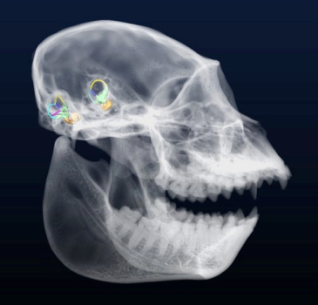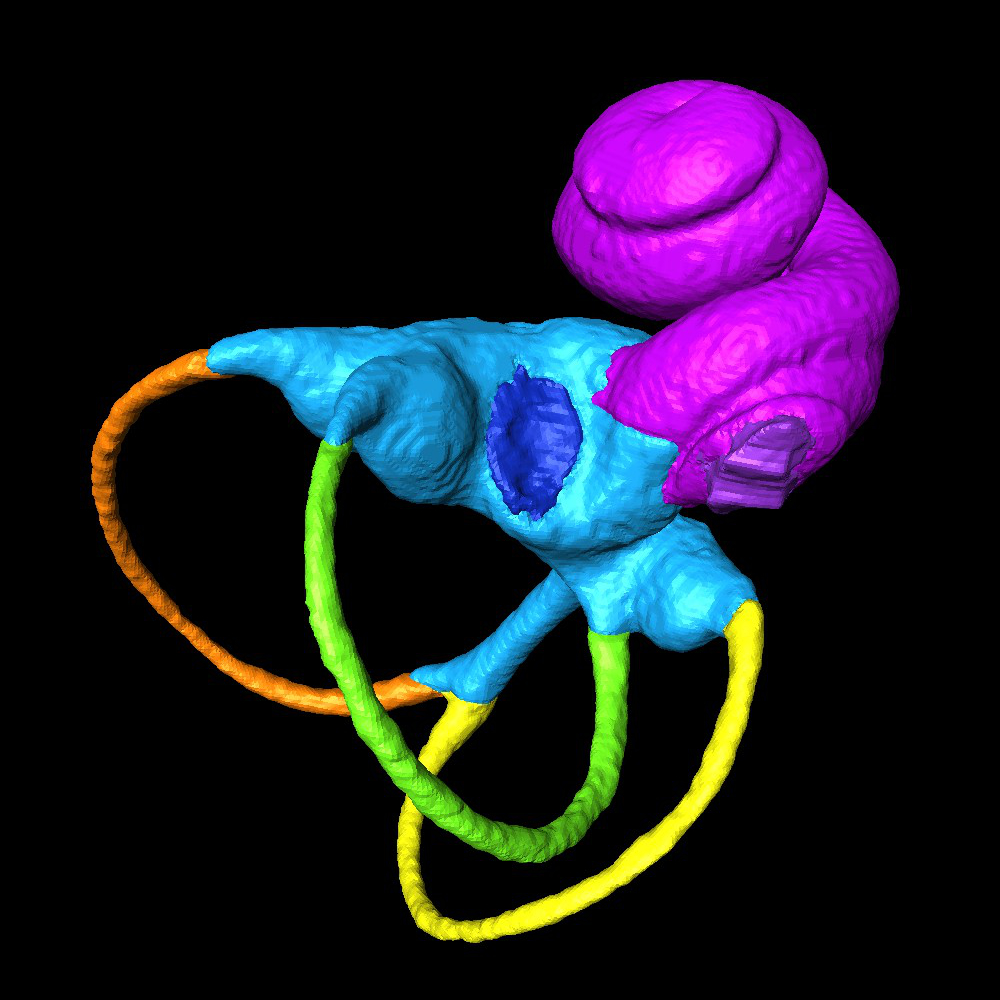Myriam Marsot PhD thesis
 Bioacoustics in current and fossil primates
Bioacoustics in current and fossil primates
Started in october 2022
Funding: French ministry of research and higher education
Supervisors: Sébastien Couette & Patricia Balaresque
Résumé
The study of biodiversity, as well as its temporal dynamics, requires on the one hand a quantitative estimation of biological diversity (taxonomic diversity, genetic diversity, etc.) but also an understanding of the origin, evolution and variation of ecological and behavioral traits of species. This implies an evaluation of the ancestral states of these traits in fossil species and an understanding of the diversification of these traits during evolution. The study of fossil specimens thus allows for paleoecological and paleoenvironmental hypotheses.  We propose to study the morphology of middle and inner ear structures in the primate group. These structures are indicative of both the evolutionary history of groups (phylogeny), but also of the biotic and abiotic characteristics of the ecosystems in which these individuals live (Coleman & Colbert, 2010, Coleman & Boyer, 2012, Bernardi & Couette, 2017, Lebrun et al., 2021). Recent access to non-invasive, high-resolution 3D imaging methods allows us to characterize, quantify, and analyze the variation of these structures in a precise and rigorous manner, providing access to data that has been little studied. This project will therefore allow us to understand the emergence and dynamics of diversity, but also to understand the response of organisms to environmental variations. The originality of this project stands in the combination of morphological data with data concerning auditory capacities at macro-ecological and macro evolutionary scales.
We propose to study the morphology of middle and inner ear structures in the primate group. These structures are indicative of both the evolutionary history of groups (phylogeny), but also of the biotic and abiotic characteristics of the ecosystems in which these individuals live (Coleman & Colbert, 2010, Coleman & Boyer, 2012, Bernardi & Couette, 2017, Lebrun et al., 2021). Recent access to non-invasive, high-resolution 3D imaging methods allows us to characterize, quantify, and analyze the variation of these structures in a precise and rigorous manner, providing access to data that has been little studied. This project will therefore allow us to understand the emergence and dynamics of diversity, but also to understand the response of organisms to environmental variations. The originality of this project stands in the combination of morphological data with data concerning auditory capacities at macro-ecological and macro evolutionary scales.
Keywords
bioacoustics, primate, morphology, acoustic niche, macro-evolution, phylogeny
- extrait:
- lien_externe:
- titre:
- Bioacoustique chez les primates actuels et fossiles
- date_de_debut_these:
- octobre 2022
- nom:
- Marsot
- date_de_debut_these_numerique:
- 202210
- kc_data:
- a:8:{i:0;s:0:"";s:4:"mode";s:0:"";s:3:"css";s:0:"";s:9:"max_width";s:0:"";s:7:"classes";s:0:"";s:9:"thumbnail";s:0:"";s:9:"collapsed";s:0:"";s:9:"optimized";s:0:"";}
- kc_raw_content:
 Bioacoustics in current and fossil primates
Bioacoustics in current and fossil primatesStarted in october 2022
Funding: French ministry of research and higher education
Supervisors: Sébastien Couette & Patricia Balaresque
Résumé
The study of biodiversity, as well as its temporal dynamics, requires on the one hand a quantitative estimation of biological diversity (taxonomic diversity, genetic diversity, etc.) but also an understanding of the origin, evolution and variation of ecological and behavioral traits of species. This implies an evaluation of the ancestral states of these traits in fossil species and an understanding of the diversification of these traits during evolution. The study of fossil specimens thus allows for paleoecological and paleoenvironmental hypotheses.
 We propose to study the morphology of middle and inner ear structures in the primate group. These structures are indicative of both the evolutionary history of groups (phylogeny), but also of the biotic and abiotic characteristics of the ecosystems in which these individuals live (Coleman & Colbert, 2010, Coleman & Boyer, 2012, Bernardi & Couette, 2017, Lebrun et al., 2021). Recent access to non-invasive, high-resolution 3D imaging methods allows us to characterize, quantify, and analyze the variation of these structures in a precise and rigorous manner, providing access to data that has been little studied. This project will therefore allow us to understand the emergence and dynamics of diversity, but also to understand the response of organisms to environmental variations. The originality of this project stands in the combination of morphological data with data concerning auditory capacities at macro-ecological and macro evolutionary scales.
We propose to study the morphology of middle and inner ear structures in the primate group. These structures are indicative of both the evolutionary history of groups (phylogeny), but also of the biotic and abiotic characteristics of the ecosystems in which these individuals live (Coleman & Colbert, 2010, Coleman & Boyer, 2012, Bernardi & Couette, 2017, Lebrun et al., 2021). Recent access to non-invasive, high-resolution 3D imaging methods allows us to characterize, quantify, and analyze the variation of these structures in a precise and rigorous manner, providing access to data that has been little studied. This project will therefore allow us to understand the emergence and dynamics of diversity, but also to understand the response of organisms to environmental variations. The originality of this project stands in the combination of morphological data with data concerning auditory capacities at macro-ecological and macro evolutionary scales.Keywords
bioacoustics, primate, morphology, acoustic niche, macro-evolution, phylogeny
